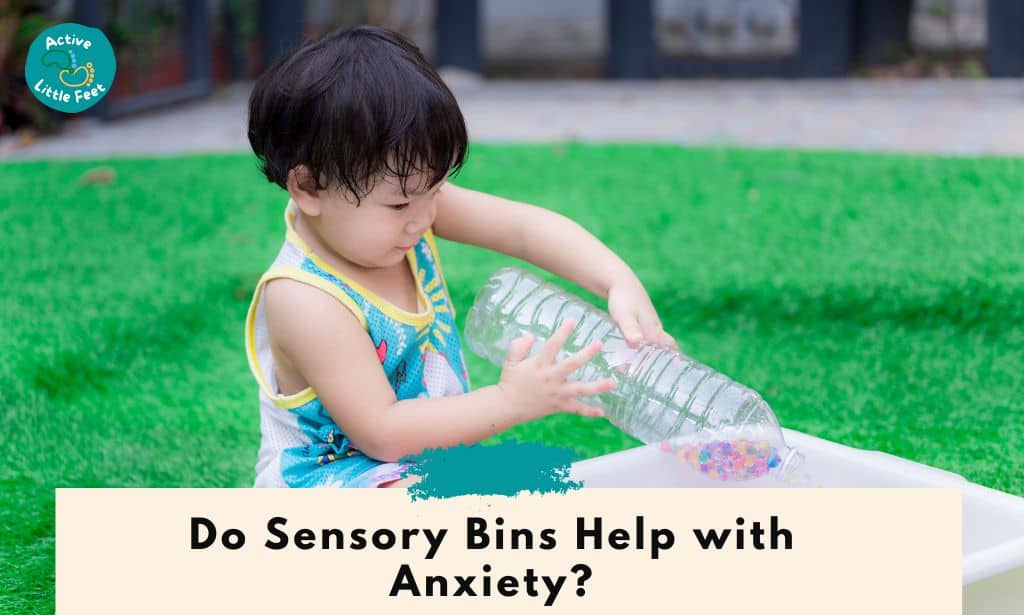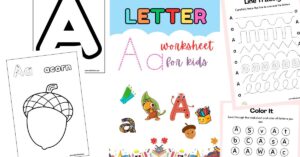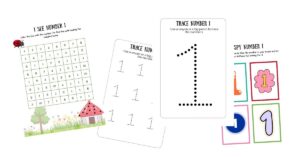The benefits of sensory bins to children are vast, and we have discussed them here. For instance, they allow children to engage all their senses and build brain pathways that play a role in cognitive, physical and social development.
But do sensory bins help with anxiety?
Sensory bins help reduce kid’s anxiety significantly because they put you in a state of flow. Flow is complete absorption in an activity that is soothing and calming to the mind, and this is what sensory bins provide.
But it is more than that. Sensory bins have a multi-faceted way of reducing anxiety, and we will look at all of them today.
Prevalence of Anxiety in Kids
According to the CDC, 5.8 million kids between 3 and 17 years were diagnosed with anxiety in 2016-2019, and 2.7 million were diagnosed with depression. This is an 8X growth compared to only 50 years ago.
The anxiety rates in children today are far higher than during the Great Depression, World War I and II and the turbulent 60s and 70s.
The question is, why?
Well, today’s kids are subjected to a myriad of daily stressors, from unrealistic academic goals to multiple directed extracurricular activities and very little time for play or socialization. Children today have lost their sense of freedom or control over their own lives, and the world is going so fast their heads are spinning, according to Psychology Today.
Unfortunately, the rates of kids with Autistic Spectrum Disorder, ADHD, reading and language disability, OCD and other sensory disorders have also increased tremendously over the last 50 years.
So what are parents to do when their kids are struggling like this?
Making time for play, specifically sensory play, is highly recommended. We will, however, focus on how sensory bins help kids deal with anxiety and tackle other types of sensory play later.

How Sensory Bins Help with Anxiety
1. Sense Immersion
As I said earlier, a sensory bin puts a child in a state of flow. This is a state where all or most of the child’s senses are captured and immersed in what the child is doing at the moment. In other words, the bin redirects all the child’s focus on what they see, hear, smell, and touch, so they can’t focus on their brain or their anxiety.
This is what mindfulness is, and it works amazingly well in managing emotions, stress and anxiety.
2. Sense of Control
Again, anxiety is caused by a feeling of not being in control of one’s life. While most young kids don’t mind it, children with autism, ADHD and sensory disorders are severely aware of their shortcomings and how they can’t control them.
Unlike extra-curriculum activities, sensory play, specifically sensory bins, allow the child to be free and in control for once. There is no outcome expected of this play, so they can create their own world, explore their feelings and senses and be creative.
At least for the time the child is playing at the sensory bin, they are fully in control and less anxious about other things.
3. Calming Effect
Sensory play is a fantastic way to calm and soothe an anxious or stressed child. The repetitive, focused activity provides a distraction and slows down the nervous system, hence creating a sense of calmness.
Think about it this way- when you are sitting by the pool, touching the cold water repeatedly and feeling it on your fingers and legs, doesn’t it calm you completely? This is how a sensory bin works, especially if the child is playing alone and the filling is a calming component like water, water beads and kinetic sand.

4. Allows the Child to Learn Sensory Attributes
Most kids have no problem learning different sensory attributes as they grow up. If you have a child with a sensory disorder, however, they may have trouble experiencing different senses.
Autistic kids, for example, react badly to loud noises, heat, and even masses of people. Other kids have issues with wet and sticky textures, which causes them anxiety.
When you know your child’s sensory issues, you can design a sensory bin suited for them. This will help them learn and explore different sensory attributes in a controlled, safe space until they get used to it. A perfect sensory bin for this situation is set up so that other senses are distracted so the child won’t pay too much attention and get spooked by the sense you are trying to stimulate.
5. Build Brain Connections
Last but not least, sensory bins help build nerve connections in the brain to enable complete development mentally, emotionally and physically. The more a child participates in sensory play, the more their language, social and problem-solving skills develop.
In a study where they created sensory rooms for kids and filled them with music, aromatherapy, bubble tubes and mood lamps, researchers noticed improved self-esteem and emotional well-being in kids who visited those rooms.
This is because the kids gain confidence and skills to deal with things that would typically give them anxiety. Their social skills improve, their fear decreases, and they learn to cope better with stressors and people.
Sensory Bin Ideas for Anxiety
It is my belief that children are born with the desire to engage in sensory play. This is why we used to play in the rain and touch mud outside. It is what makes children the happiest, and also why today’s kids are miserable because they don’t get to do it like us.
Without playing in the rain and touching mud, you must create a sensory bin that mimics that experience. This article has fantastic sensory bin ideas you can try at home and most of the items you can get from your house.
The idea of a sensory bin for anxiety is choosing things that will calm the child down.
- Squishy balls
- Play-doh
- Water
- Water beads
- And kinetic sand
All these are great; you only need to add tools such as spoons, cups, scoops and figurines to make the play fun.
That said, create a sensory bin that takes care of your child’s needs. If you have a child with ADHD, autism or other sensory issues, ask for recommendations from your doctor on what to include in the sensory bin.




